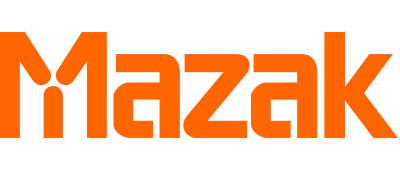
Companies continue to face unprecedented workforce challenges. In the manufacturing sector, meeting the demand to find, recruit, develop and retain qualified, skilled employees has become a business imperative that requires a holistic, highly strategic approach to workforce development.
Approaching manpower recruiting and retention without a well-conceived approach is like plugging a hole in a dam without first considering how the hole initially developed and what should be done to keep it from happening again. The questions must be asked: Where are our weaknesses, and what can we do to reinforce them?
The current workforce is not what it used to be. Today’s potential employees want flexibility, advancement, a sense of purpose and equilibrium in their work/life balance. If those needs are not addressed and met, there’s a good chance talent will move on, assuming they were able to be hired in the first place. Each month, 3 to 4.5 million employees quit their jobs, bringing yet another challenge to be overcome. Turnover and talent drain costs employers about 33% of the worker’s annual salary to replace them. However, successful recruiting and retention are possible when companies take a truly strategic approach to workforce development.
The first aspect of such a plan involves evaluating job descriptions and compensation plans. In evaluating job descriptions, the key is to determine the skills and talents required for each position as well as the necessary training. Once those criteria are established, the focus should move to the employee candidate with an eye toward identifying potential future leaders within the company.
Compensation strategies are simple and straightforward. Salary and benefit packages need to be competitive and designed in such a way that they attract the best talent available. Participating in multiple salary surveys will provide valuable data to restructure compensation based on positions, skill sets and experience. To satisfy employees’ desire for a sense of purpose in their work, companies should come out of the recruitment box by positioning their employment opportunities not as a job, but a career. Such a mindset and philosophy benefits everyone.
In terms of recruiting, today’s challenges require casting a broader net with stepped up posting efforts to target key candidate pools such as military veterans. During the pandemic, Mazak didn’t lay off any employees; however, we also did not bring on any new hires. However, the post-pandemic customer demand surge forced a corresponding surge in recruiting efforts to regain manpower.
Through internal promotions and new hires, many of which were military veterans, we brought our workforce back to its optimal level. Military veterans have been instrumental in our efforts to move past the skills gap challenging companies throughout the manufacturing industry, and our staff now includes more than 87 veterans in departments ranging from field service and parts to production and purchasing.
Once hired, keeping employees happy and engaged is critical to a durable, dynamic workforce. Advancement opportunities are an essential element of employee satisfaction and provide employers with a succession plan to identify future leaders. A solid strategy is to fill lower-level jobs as much as possible then provide employees with extra training through internal and external opportunities that will advance them to higher level positions within the company. A solid succession plan should not be overlooked. It is critical to a company’s success, and without one, they are destined to fail.
In addition to advancement opportunity, flexible work schedules and job rotations are excellent methods of retaining employees who are fulfilled and engaged with their work. Offering employees an alternative to the standard five-day/40-hour routine is the 10-hour/four-day per week schedule for certain shifts. Three-day weekends allow workers more work/life balance and provide an opportunity to earn overtime pay for the 10-hour days.
Job rotations, much like the alternative work week, not only prevent employee burnout, but also help build a stronger, more versatile workforce. In addition to adding skills to an employee’s resume, job rotation enables workers to cross train in various positions and tasks, allowing them to fill in when the need arises. Employee retention is enhanced because workers are stimulated by the challenge of gaining new skills and knowledge.
It’s important to note that a strategic workforce development plan is not a one-and-done proposition. It must be ongoing and dynamic to mirror the ever-changing labor pool landscape. The end goal of a truly strategic workforce development plan – now more than ever – is to attract the best and most talented individuals then retain them once they are hired. Business depends on it.
By William Weier, Human Resources Director at Mazak Corp. For more information on Mazak, visit https://www.mazak.com.

